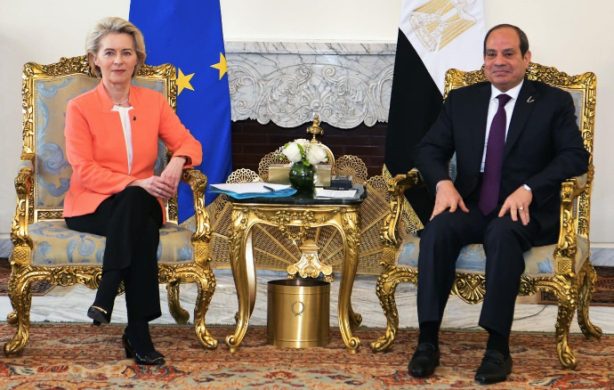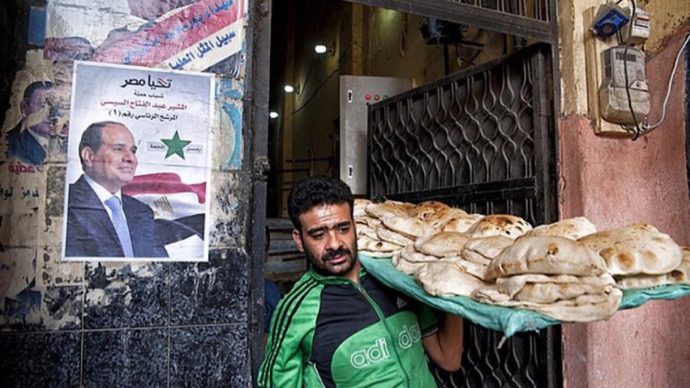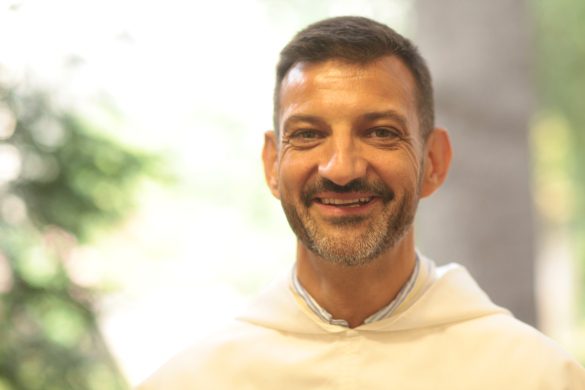Eksperter siger, at udbredt under- og fejlernæring ikke skyldes mangel på mad, men at mange egyptere ikke spiser en varieret og rigtig sammensat kost på grund af stigende fattigdom efter revolutionen. Experts say malnutrition in Egypt is related to a lack of access to proper foods, leading to a deficiency in essential micronutrients CAIRO, 9 March 2012 (IRIN): Nasser Ali Hossan Morsy, who worked as a porter in central-northern Egypt, knew he needed another source of income when he suffered lower back problems last year so he decided to take a loan and buy a motorcycle. The motorcycle, he reasoned, would help him provide for his wife and five children. Once operational, it could also help him pay back the 3.500 Egyptian pound loan (580 US dollar). But things took a turn for the worse when the motorcycle was stolen, and shortly after, major protests erupted throughout Egypt in February 2010, leading to the ousting of then President Hosni Mubarak. Since then Morsy has been scrambling to make ends meet in his home town of Maghagha, some 175 km south of Cairo. Between his debt and back problems, earning enough to feed his wife and children, aged two months to 16 years, has been a real challenge. “I do not find enough food because there’s no more work,” he said. He is not alone “Poverty is a common result of the 25 January revolution,” said Nabil Gamil Mohamed, professor of paediatrics (i børnesygdomme) at Minya University and regional head of political party the Muslim Brotherhood. Increasing poverty, he added, has had two effects: new cases of malnutrition have emerged, and families already dealing with malnutrition are facing more pressure to feed properly. In Maghagha’s Qulyan neighbourhood, where Morsy lives, many people now feed only on `ful’ (cooked and mashed fava beans) and sesame-sprinkled ta’meyya (deep-fried fava bean patty (postej)) sandwiches. Their daily diet does not include fruit, vegetables or dairy products, and last time most had meat was last November, during Eid al-Adha, he said. It had been donated by the local al-Gama’ayat al-Shara’aya, the social arm of the Muslim Brotherhood. According to Awad Abdul Hafiz, head of the charity al-Gama’ayat al-Shara’aya responsible for Qulyan, about 30 new needy families registered with his organization last year. It is a small number, mainly because Maghagha did not witness the same level of violence that rocked the Egyptian capital and the Nile delta. Currently, his organization provides about 650 Maghagha families with a meal every two weeks, and a minimum monthly food allowance of 20 Egyptian pounds (three dollar) per child. This supplements an average monthly family income of 200-300 Egyptian pounds (33-50 dollar). Al-Gama’ayat al-Shara’aya’s money comes from roughly 1.000 donors, but the economic turmoil in which Egypt finds itself has had an impact on this as well. “There has been a slight decrease in donations since the revolution,” says Abdul Hafiz. Low incomes Læs videre på http://www.irinnews.org/Report/95040/EGYPT-Fears-of-rising-malnutrition-amid-increasing-poverty
Egypten: Frygt for under- og fejlernæring med stigende fattigdom














